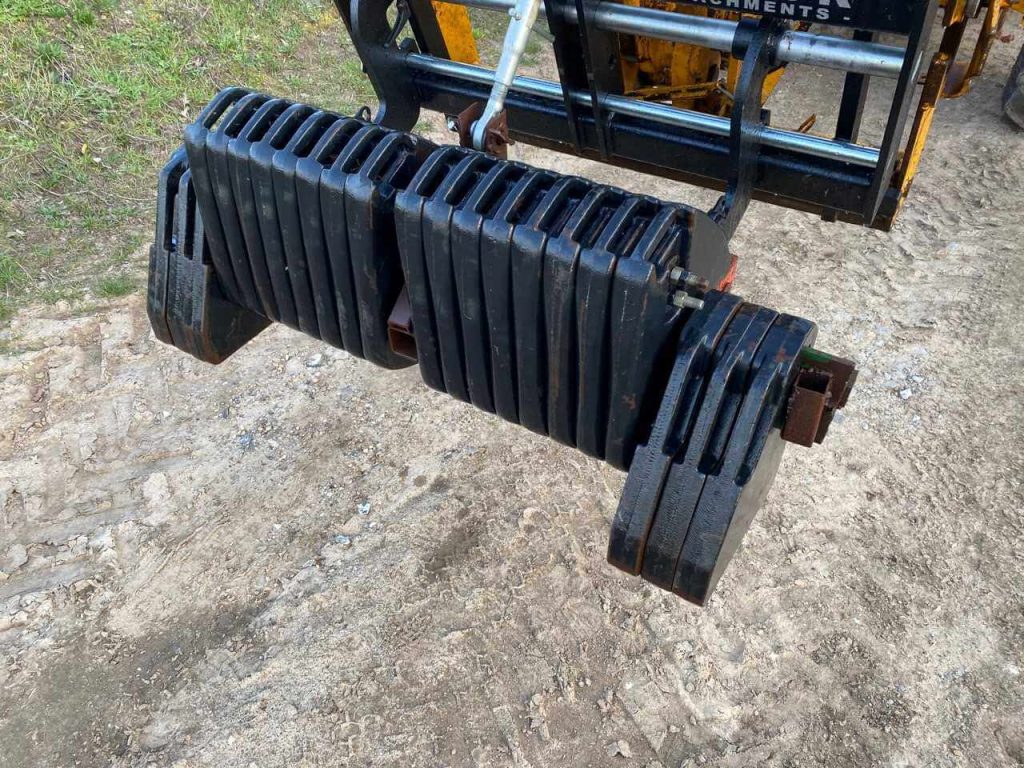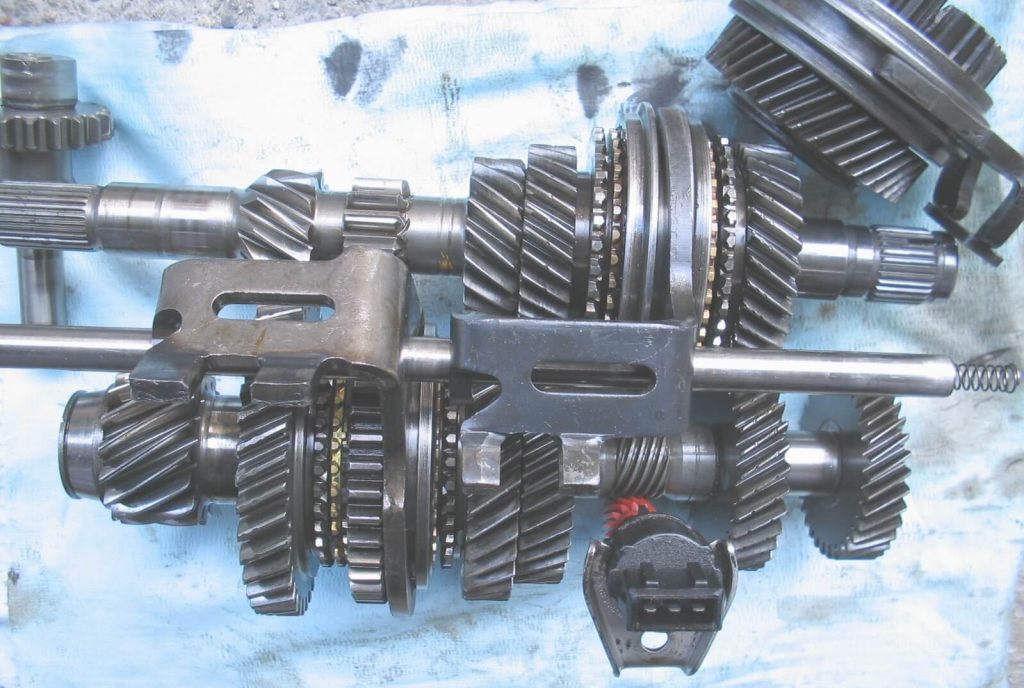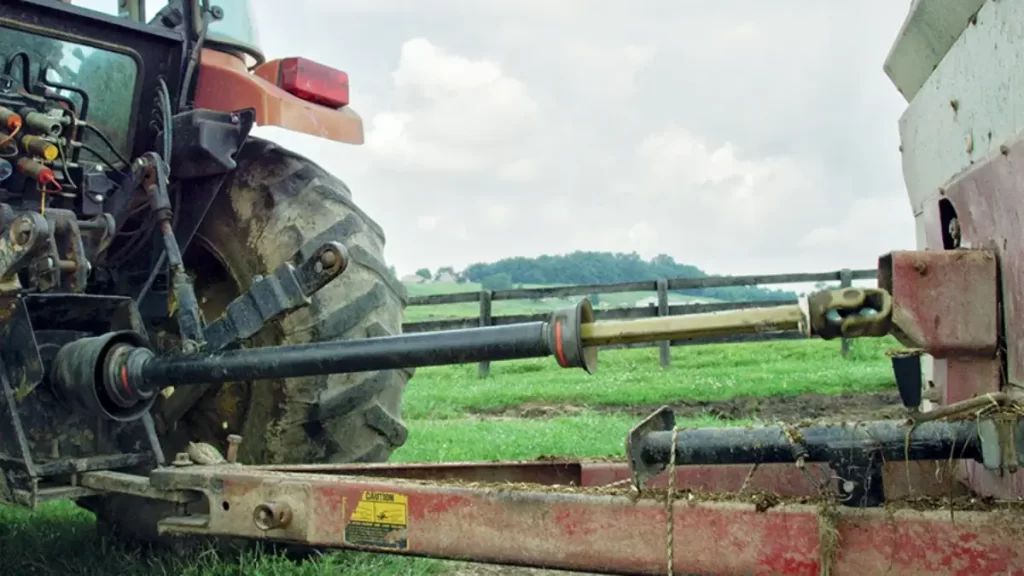In the world of agricultural machinery, the components of a tractor are much more than the sum of its parts. From the front axle and engine compartment to the mid-mount transmission and rear PTO interface, each part has a unique and irreplaceable role to play. How these parts are laid out and how they interact with each other can have a direct impact not only on the tractor’s performance, but also on its adaptability to terrain, operational efficiency and long-term maintenance costs.
Farmers and fleet managers often ask: What’s the real difference between a front-mounted heavy loader and a rear-mounted PTO machine? Why is a four-wheel drive configuration important when working on slopes or muddy paddies? These questions reveal a deeper truth: Understanding the inner workings of a machine is not just for engineers, but can lead to more informed decisions in real-world farming.
This article divides tractors into three core structural areas – front, center and rear – and explores the different roles they play in field operations. Whether you’re choosing your next machine or trying to optimize your current use, the goal of this article is to help you grasp the logic behind the positioning of the components and guide you to the configuration that truly meets the needs of your job.
Contents
- 1 1. Front-end components: the power of control and balance
- 2 2.Mid-range components: the core of business
- 3 3.Rear-end components: implementation interface
- 4 4.Application Scenarios
- 5 Conclusion
1. Front-end components: the power of control and balance
The front-end structure of a tractor not only determines the maneuverability and passing ability of the whole machine, but also directly affects its stable performance in complex terrain, load operation and traction process. Reasonable front-end configuration is the basis for realizing “precise operation” and “efficient power transmission”.
1.1 Steering and front axle system
Core function: responsible for the steering of the whole machine, climbing and passing ability, as well as carrying the weight of the front assembly.
Analysis of structural differences:
2WD (two-wheel-drive) front axle: suitable for flat farmland, light steering, lower price, but insufficient traction in wet or hilly terrain.
4WD (four-wheel drive) front axle: equipped with differential lock, can significantly improve the climbing and mud through the sex, more suitable for mountain orchards, paddy fields and other complex conditions.
Maintenance suggestions:
Regularly check the universal joints, bearings and oil seals to prevent erosion by mud and water;
Under high load conditions (such as hanging heavy agricultural tools), it is recommended to add “hydraulic power steering device” to improve the handling experience.
✅ Practical application example: MINNUO 4WD orchard tractor operates in tea plantation in Guangxi mountainous area, the wading depth of the front axle is increased to 70cm, and the grip performance of the front tires is optimized, which ensures stable operation in rainy season.
1.2 Engine compartment
Key function: to provide stable power output for the whole machine, which is the core area of the “powertrain”
Typical parts include:
Engine block: most of them are turbocharged diesel engines, taking into account the low-speed and high-torque output
Water tank + radiator: to ensure the thermal balance of the engine in a high-temperature environment to avoid cylinder pulling. Cylinder pulling”
Air intake + fuel system: determines the combustion efficiency and economy
Optimization suggestions:
Hot zone operation (e.g. Middle East) should use aluminum fins + thickened copper core radiator to improve thermal conductivity
Dusty operating environment (e.g. Africa) is recommended to be equipped with a three-stage intake air filtration + independent air intake channels
Plateau or cold areas are recommended to add intelligent cold-start preheaters + air booster device
✅ MINNUO Several models are equipped with an optional “Air-Oil Cooling Module” in the 75-110hp power band, to meet the challenges of summer heat and work continuity.
1.3 FRONT WEIGHING BLOCKS AND LOADERS
IMPORTANT OVERVIEW: Front weights optimize the center of gravity of the entire machine, effectively preventing the tractor from “rearward bucking” or “steering drift”, especially critical when towing large implements or rear-mounted sprayers.
Typical configurations:
Fixed iron counterweight (50-600kg): simple and practical, suitable for open farmland
Detachable modular counterweight: suitable for inter-regional transportation or short-time load adjustment
Front loading shovel/grapple system: in addition to counterweight, it can also be used for composting, loading, etc.
Explanation of structural compatibility:
The loader arm should be welded in one piece with the frame of the vehicle, to avoid deformation;
Hydraulic circuits need to be independently supplied to avoid interfering with the work of the main pump; installation of the “hydraulic circuit” should be carried out independently of the main pump; installation of the “hydraulic circuit” is not necessary. The hydraulic circuit must be supplied independently to avoid interfering with the work of the main pump;
The installation of a “hydraulic pressure limiting valve + tilt angle sensor” improves operational safety.
✅ MINNUO Case Expansion: Customized 100hp multi-purpose tractor exported to Kazakhstan in Central Asia, equipped with front-end grass-grabbing device and 400kg counterweight block, meanwhile designed with quick-attachment insertion and extraction latch, which can complete the counterweight conversion in only 15 minutes, and is widely acclaimed by the ranch users.

2.Mid-range components: the core of business
The mid-range part is the “core power area” of agricultural machinery operation, which determines the traction efficiency, operation comfort and oil system stability of the whole machine. Good transmission system, cockpit arrangement and hydraulic oil circuit configuration are the basis for guaranteeing the stable operation of all-weather operation.
2.1 Transmission and Gearbox
Core function: to transfer power from the engine to the axle, realizing the key link of “moving up” and “moving accurately” of the tractor.
Type analysis:
Sliding Gear: simple structure, low cost, applicable to basic tractors.
Power Shift: No need for clutch, can switch gears under heavy load, suitable for medium and large-scale operation.
CVT Continuously Variable Transmission: realizes stepless speed regulation, suitable for orchard/spraying and other scenarios that require precise speed regulation.
Configuration Suggestions:
High temperature area: It is recommended to equip transmission with oil cooler radiator to prevent slippage caused by high oil temperature;
Slope operation area: It is recommended to equip “Self-locking Heavy Differential” to improve the stability of hill climbing traction;
Agronomy scenarios that require repeated speed change (e.g., mid-tillage, fertilizer spreading): CVT+throttle memory function is helpful for energy-saving and control.
✅ MINNUO provides Power Shift + Heavy Duty Differential configuration combination, which is suitable for multi-process wheat replanting mode in hilly areas of South Asia, with sensitive gear shifting and smooth traction.
2.2 OPERATOR’S CABIN OR DECK
DRIVING EXPERIENCE CRITICAL AREA: A good cockpit not only enhances comfort, but also dramatically reduces the fatigue intensity of long hours of operation.
Common Core Configurations:
Seat: Adjustable airbag suspension seat can effectively absorb bumps;
Instrumentation and Console: LCD screen combined with dial-type PTO speed control is more ergonomic;
PTO linkage control area: with “automatic braking + PTO synchronized stop-start” linkage logic, to prevent the power failure from accidental rotation.
Safety and comfort design upgrade suggestions:
Hot area: should choose heat insulation coated glass cab + dual fan circulation air conditioning;
Low temperature area: recommended to add electric heating handle/seat + front windshield defrosting system;
Dusty or chemical operation scenarios: need to be equipped with a “positive pressure dust control system + three-stage air filtration”.
✅ MINNUO customized cases in many places, the cockpit can support “directional airflow adjustment + voice reminder + sitting posture recognition”, with the design of wide-angle field of vision, to improve operational safety.
2.3 Fuel and Hydraulic Tank
Core task: To ensure the continuous supply of energy and hydraulic power, especially in heavy-duty and continuous operation, the stability of fuel and hydraulic system is crucial.
Configuration suggestions and maintenance priorities:
Center-mounted tank design: the tank is centrally located in the center of the transmission system, which helps to balance the center of gravity of the whole machine and reduce the risk of rollover;
Hydraulic tank equipped with a pneumatic balancing valve: to prevent air from backing up and contaminating the oil, and to prolong the service life of the hydraulic pump;
Oil circuit zoning maintenance strategy: the fuel system and the hydraulic system should be designed with dual isolation, which facilitates independent maintenance and explosion-proof protection;
Filter element monitoring and replacement mechanism Recommended to install oil pressure + cleanliness online detection module (ISO 4406 standard) to facilitate regular maintenance.
✅ MINNUO industrial series tractors are equipped with an integrated hydraulic-fuel monitoring platform, which records real-time parameters such as flow, temperature and moisture content, and is suitable for long-cycle fertilizer/plow/rotary operations.

3.Rear-end components: implementation interface
The rear of the tractor is not only the power source for driving the rear wheels, but also the “functional interface” connecting various agricultural implements and operational attachments. Whether a tractor can perform different agronomic tasks such as seeding, furrowing, spraying, fertilizing, mowing, etc., the configuration and matching of the rear system is a decisive factor.
3.1 Rear Axle and Drive System
Core Function: Transmit the engine power to the rear wheels through the main gearbox, and undertake the tasks of traction and load output.
Typical structure analysis:
Heavy-duty rear axle: suitable for muddy paddy fields, slopes and deep plow operations, adopting forged steel axle housing + thickened spiral bevel gears, with strong impact resistance and durability;
Differential lock control: electronically or hydraulically operated differential lock design effectively avoids idling of a single wheel during operation, and improves the ability to get out of trouble in complicated terrain;
Oil-bath wet brake: more stable braking under heavy loads or continuous construction work, with long maintenance intervals.
Daily maintenance focus:
Rear axle oil level and grease replacement cycle: it is recommended to check and add every 300-500 hours;
Drive bearing dust seal wear warning: determine whether to replace it by tailshaft shaking test or oil seal leakage inspection.
✅ MINNUO provides “rear axle high temperature monitoring + electronic control differential lock synchronization adjustment” combination package for heavy load users, which effectively reduces the loss of wheel system.
3.2 Three-point hitch system (Cat I-III)
Functional definition: the standard connecting mechanism between agricultural machinery and implements during agricultural operations. It stabilizes the working implement at the rear of the tractor through three connecting rods and transmits vertical and horizontal thrust.
Classification (based on ISO 730 international standard):
Cat I: for small implements (tillage width <1.2m), commonly used in vegetable fields and orchards;
Cat II: for medium-sized implements (tillage width 1.5-2.5m), mainstreamed in the mid-horsepower range;
Cat III: for large-scale deep loosening, land preparation and plowing implements, need to be matched with models above 90 horsepower. Cat III: used for large-scale deep pine and plowing implements, needs to be matched with 90 hp or above models.
Common Misconceptions and Solutions:
The chain rod is not locked: it causes the implement to shake and the angle to change during operation;
The angle of the lower suspension arm is too steep: it will reduce the lifting height and even lead to lifting failure;
Mismatch between tractor horsepower and implements: it will cause excessive load on the PTO and burn the drive shaft.
✅ MINNUO provides “Cat II & III 3-Point Suspension Intelligent Adjustment Module” for farm equipment with different horsepower, which supports automatic adjustment of linkage height during operation and effectively improves the passability of farm equipment and consistent operation.
3.3 PTO (Power Take-Off) Shaft
Description: PTO (Power Take-Off) Shaft is the key transmission interface for tractor-driven “passive farm implements” such as seeders, shredders, rotary tillers, fertilizer spreaders, etc.
Classification of output forms:
Standard speed: 540 RPM (commonly used in small and medium-sized sprayers and fertilizer spreaders);
High-speed output: 1,000 RPM (suitable for large-scale forage pickers, straw balers, powerful rotary tillers, etc.).
Optional matching: six-key/eight-key spline output shaft, supporting the compatible use of domestic and foreign agricultural implements.
Safety and use precautions:
PTO speed adjustment should be completely off before switching, to prevent high pressure linkage caused by transmission parts fracture;
PTO sheath shall not be removed: use must ensure that the rotary shaft outside the protective cover to avoid winding injury;
power transmission chain length should not be too long, too loose easy to slip, too tight easy to damage the bearing.
✅ MINNUO tractor can be equipped with optional “PTO abnormality reminder system”, when encountering obstruction/speed breaks and other conditions automatically cut off the power and pop-up alarm, effectively protect personnel safety and equipment stability.

Comparative summary table
| Section | Core Functions | Typical Components | Precautions |
| Front-End | Controls and Counterweights | Engine, front axle, front shovel | Cooling, counterweight balancing |
| Mid-Section | Maneuvering and Power Transmission | Transmission, cockpit, hydraulic tank | Operational comfort, lubrication |
| Rear-End | Operational Mounts and Outputs | Three-point suspension, PTO, rear axle | Matching of implements, safety precautions |
4.Application Scenarios
Agricultural operation environments vary greatly, and different terrains, crops and climatic conditions put forward very different configurations of front, middle and rear components of tractors. MINNUO provides adaptive suggestions according to typical operation scenarios to help users build powertrain combinations “tailored to the needs of the local conditions”.
Scenario 1: Orchard Precision Work
Features: The terrain of orchards is mostly narrow rows with dense planting and undulating slopes, which requires the tractor to be flexible and maneuverable as well as balanced and stable at the front and rear.
Recommended configuration:
Rear: three-point mounted electric or hydraulic precision sprayer (Cat I specifications), adapted to the height of fruit trees and precise spraying;
Front: counterweight module (≥80kg) + hydraulic damping device, effectively preventing the operation of the heavy load caused by the “forward buckling”;
steering system: recommended dual-cylinder assisted structure, reducing the radius and facilitating the frequent use of forest trails. Steering system: dual cylinder power structure is recommended to reduce the radius and facilitate frequent turnaround in forest trails.
✅ MINNUO Case Expansion: Nanfeng citrus orchard in Jiangxi Province, using 45hp small orchard machine, front and rear counterweight balance, suspension supporting flexible, can complete 60 acres of spraying tasks per day, operational efficiency increased by more than 30%.
Scenario 2: paddy field operation (e.g. paddy field)
Operating characteristics: paddy field is soft and sticky, easy to get stuck, and requires long time PTO-driven rotary plowing and pumping operations, which requires the whole machine to be “wet-resistant, non-slip and silt-resistant”.
Recommended Configuration:
Middle: waterproof cover for middle tank + high chassis design, bottom height ≥400mm from the ground, to prevent water from seeping back into the cabin;
Power output (PTO): preferred 540rpm + high torque low-speed PTO output tractor, suitable for all kinds of rotary tillage pumps, pumping pumps;
Tires/tracks: optional steel wire paddy tires or semi-tracks. Tires/tracks: optional “steel paddy tires” or “half-track conversion” to enhance the passability.
✅ MINNUO Case Expansion: The 60hp paddy field machine ordered by the Iloco Rice Farming District in the Philippines uses a high ground clearance chassis and mud-proof PTO interface to effectively reduce field failures, with an average seasonal attendance rate of more than 93%.
Scenario 3: Mountain/Terrace Reclamation
Characteristics of the operation: large plot slopes, limited load capacity, stable climbing, sufficient torque, and rear trailer to cope with terrain staggering.
Recommended Configuration:
Front: standard 4WD drive axle + front power-assisted hydraulic steering system, improving grip and preventing side-slip;
Middle: powerful transmission system + transmission locking mechanism, preventing skidding on slopes;
Rear: high-torque rear output interface + Cat II standard three-point suspension structure, adapting to rotary tiller, trenching plough and other agricultural implements.
✅ MINNUO Case Expansion: The 75hp terracing machine purchased from a fruit and vegetable base in the Peruvian Andes is equipped with a zone-assisted structure and a ramp self-braking system, which realizes a stable output of ±20° for hill climbing operations, and the rollover rate is reduced significantly.
Conclusion
Understanding the division of functions and synergies between tractor front-end, mid-section, and rear-end components is more than just a technical issue; it’s also the foundation of real-world productivity. From steering stability to engine transmission to implement compatibility, each part plays a unique and interrelated role in determining how the machine performs in a variety of field environments.
Whether you’re working in orchards, wetlands or mountainous terrain, matching the right structural configuration – such as front axle type, transmission class or PTO output – to the needs of your application is critical to avoiding inefficiencies, premature wear and tear, and even downtime in the field.
That’s why MINNUO not only offers complete tractor solutions, but also configuration advice tailored to your crop type, terrain and regional operating habits. From modular chassis selection to multi-scenario implement matching, our engineers will help you optimize every part of your machine so your tractor works smarter, not harder.
✅ Ready to get the best configuration for your field conditions? Contact a Minnow Configuration Specialist today
✅ Our engineers will help you optimize every part of your machine so your tractor works smarter, not harder.

